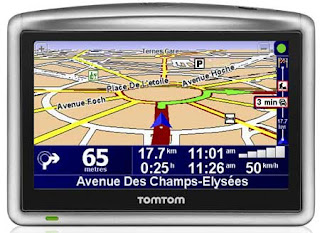 FOR IMMEDIATE RELEASE
FOR IMMEDIATE RELEASE
Coming Off Its Blow-Out Bay Area Conference, BZ Media Launches SPTechCon Boston in June 2009
The Only SharePoint Technology Conference in the Northeast U.S. will satisfy a strong demand for education on Microsoft’s popular enterprise platform
Huntington, N.Y., January 27, 2009 — BZ Media LLC today announced that it is bringing SPTechCon™: The SharePoint Technology Conference to Boston in June 2009. This follows the incredibly successful debut event, SPTechCon San Francisco, which was held January 27-29, 2009.
SPTechCon Boston will be held June 22-24, 2009, at the Hyatt Regency Cambridge. The three-day conference will offer more than 60 technical classes and workshops for IT professionals, systems administration managers, line-of-business managers, business analysts and software developers.
Extreme Early Bird pricing for SPTechCon Boston attendees is open through March 12, 2009.
BZ Media is the publisher of SD Times, the newspaper of record for software development managers as well as Systems Management News, the authoritative source for IT professionals and systems administrators.
Based on the strong attendance at the debut San Francisco event (see separate release), and on early responses from SharePoint users asked about a summer event in the Northeast, more than 500 attendees are expected at SPTechCon Boston. It’s a possibility that the conference will reach sell-out levels of 700 attendees.
The first day at SPTechCon Boston will be filled with intensive full and half-day workshops, while the next two days contain several keynote addresses and dozens of concurrent classes. All classes are focused on maximizing the benefits of using Office SharePoint Server, a Microsoft technology that provides a single, integrated platform where employees can efficiently collaborate with team members, find organizational resources, manage content and workflow, and leverage business insight to make better-informed decisions.
With faculty drawn from Microsoft’s SharePoint team, as well as Microsoft MVP experts in the field, there’s no better place to get a SharePoint education than SPTechCon Boston.
Many classes at SPTechCon also cover complementary Microsoft technologies, including Microsoft Windows Server, the Microsoft Office System, and Windows SharePoint Services. The conference will also have a trade-show floor where exhibitors and sponsors can demonstrate compelling third-party applications, add-ons, plug-ins, tools and services built for Office SharePoint Products and Technologies.
Ted Bahr, President of BZ Media, said, “In today’s difficult economy, enterprises and organizations of all sizes are using SharePoint increase employee productivity while managing or even reducing IT and line-of-business operation costs. No matter the industry, the workshops and technical classes at SPTechCon Boston will help attendees deploy SharePoint faster, use it better, and offer more benefits to their companies faster. We’re proud to offer SPTechCon to serve this pressing educational need.”
Tom Rizzo, Director of SharePoint at Microsoft, said, “Microsoft Office SharePoint Server is the key to unlocking the productivity hidden within every business. BZ Media’s SPTechCon, coming to Boston this June, is the key to unlocking the productivity inside your SharePoint implementation. In today’s challenging business climate, there’s no better time to realize the tangible benefits of using SharePoint in your organization — and extending your use of SharePoint to more parts of your operation. Whether you’re an administrator, business professional or developer, you’ll benefit from the practical training at SPTechCon 2009 Boston.”
About BZ Media
BZ Media LLC® is a high-tech media company combining the best of print and Web-based publishing, offering industry-leading magazines, newspapers, Web sites and conferences.
SPTechCon™ San Francisco (Jan. 27-29, 2009) and SPTechCon™ Boston (Jun. 22-24, 2009) are the leading SharePoint Technology Conferences for IT professionals, business managers and developers.
Z Trek Copyright (c) Alan Zeichick
 Microsoft might be violation of the GNU General Public License. What does that mean for its recent patent-infringement lawsuit against GPS maker TomTom?
Microsoft might be violation of the GNU General Public License. What does that mean for its recent patent-infringement lawsuit against GPS maker TomTom?

























